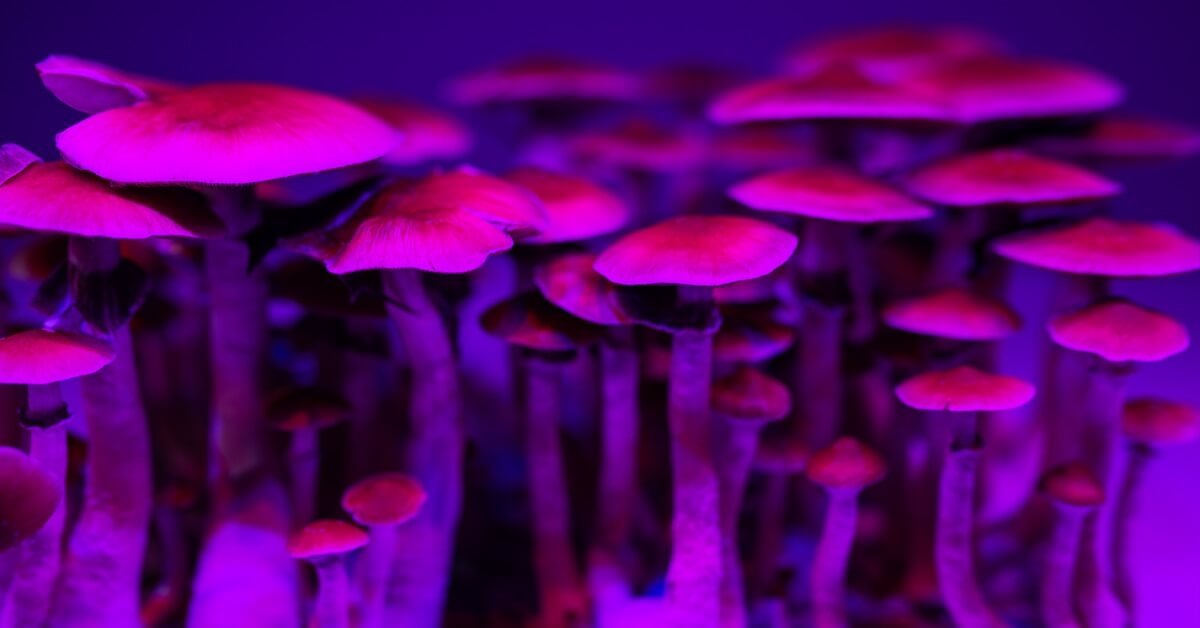
Contact
- FAQ
- About Us
- Contact Us
- Affiliate Program
- support@planetspores.ca
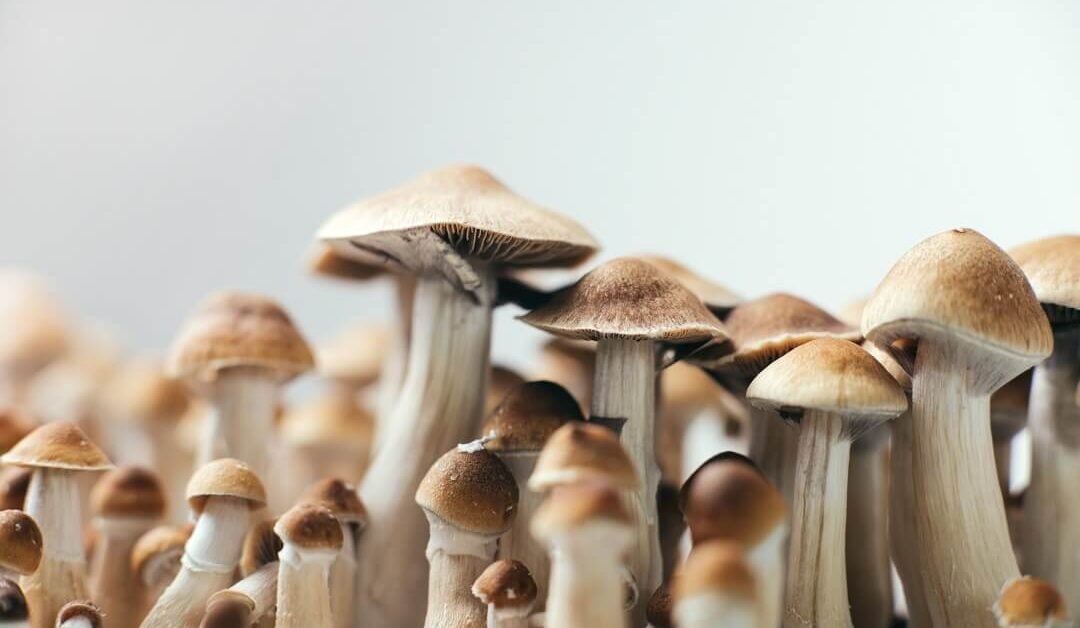
Growing mushrooms may seem like a difficult task, but once the basics are understood, it is a simple, but rewarding process.
Whether you are growing as a part-time hobby or want to start growing mushrooms as a business, most of the same basic principles apply.
In this guide, you will learn about the basics of mushrooms growing and the mushroom life cycle.
If any of the terminology in this article confuses you, please refer to our mushroom glossary page.
Mushrooms are a resilient crop that can be cultivated in a variety of different environments, both big and small.
You don’t need to have the ‘perfect’ space to start growing magic mushrooms, a spare bedroom, basement, or even a vacant closet will work.
Apartments, houses, warehouses, and outdoor spaces can all become suitable spots to successfully cultivate your own mushrooms.
If cultivating mushrooms is something you have always been curious about, don’t hesitate, now is the time to get started.
Supplies:
Mushroom spawn is any substance that mycelium can grow on. Once mycelium has grown on a substance it is often referred to as being colonized.
Grains, straws, and popcorn kernels are all examples of suitable mushroom spawn. However, for magic mushrooms we recommended grains such as rye berries and whole oats.
Rye and oats are most commonly used for their high water retention and accessibility.
You may be wondering where to find high-quality mushroom spawn, it can be sourced locally or you can purchase our organic spawn. We offer both dry whole rye grain and sterilized rye, conveniently we also stock whole oat grain, and sterilized oats.
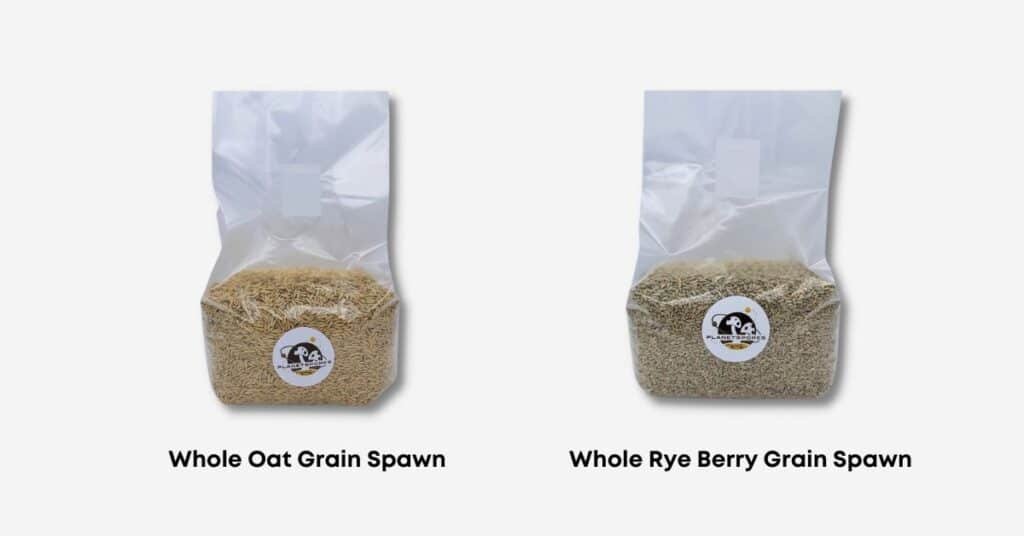
Begin by rinsing the mushroom spawn in a bucket or pot with clean water at least twice. Once the spawn is clean, drain the excess water.
Next up is soaking, the purpose of soaking your grain spawn is to allow it to absorb as much water as possible. As you learn to grow mushrooms you will also learn how much mushrooms love and need water to flourish.
Soak the spawn in water for 12 to 24 hours. After the spawn has visibly absorbed most of the water, drain the excess water.
The last step to maximize water absorption within your spawn is the simmering and supplement phase.
Bring the grain spawn to a simmer on the stove for a short amount of time, allowing it to absorb as much water as possible without bursting the shells of the grain. This is also the optimal time to add any extra supplements to the spawn.
Drying the spawn is the next task. The goal is to ensure the outside of the grain is dry while maintaining the hydration inside the grain, avoiding over-drying whenever possible.
Drying can be achieved with many methods such as air drying in a strainer, laying the spawn on towels, window screens, and adding a fan as needed to speed the process up.
Supplies:
Sterilization of mushroom grain spawn kills harmful bacteria and other microbes within the spawn. Sterilizing the spawn will give your mycelium the best chance at successfully colonizing your grain spawn without interference from unwanted pathogens.
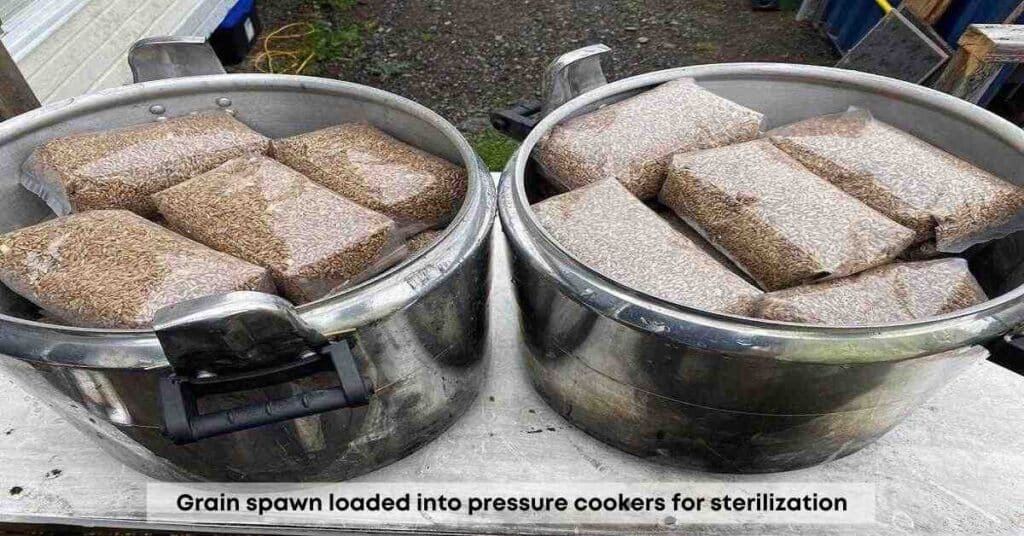
Begin by filling heat-resistance filtered mushroom spawn bags or mason jars with the grain spawn you prepared earlier. The amount of grain you use is entirely up to you.
Fold or wrap the open part of the mushroom bag around itself, then load the grain spawn bags or jars into your pressure cooker.
Next, sterilize the grain at 15 PSI and for 1 hour and 30 minutes to 2 hours and 30 minutes. PSI and sterilization times will vary depending on which spawn you choose.
Now it’s time to remove the sterilized grain spawn. From this point forward, it’s imperative to ensure your workspace, tools, and self are clean. Clean everything with Isopropyl alcohol and perform tasks in a still air box or in front of a flow hood, while wearing gloves.
Remove the bags from the pressure cooker and seal them as quickly as possible using an impulse sealer. If you are using jars, the lid will already be on, so you may skip this step.
Allow the bags or jars of spawn to cool completely before proceeding to inoculation.
Supplies:
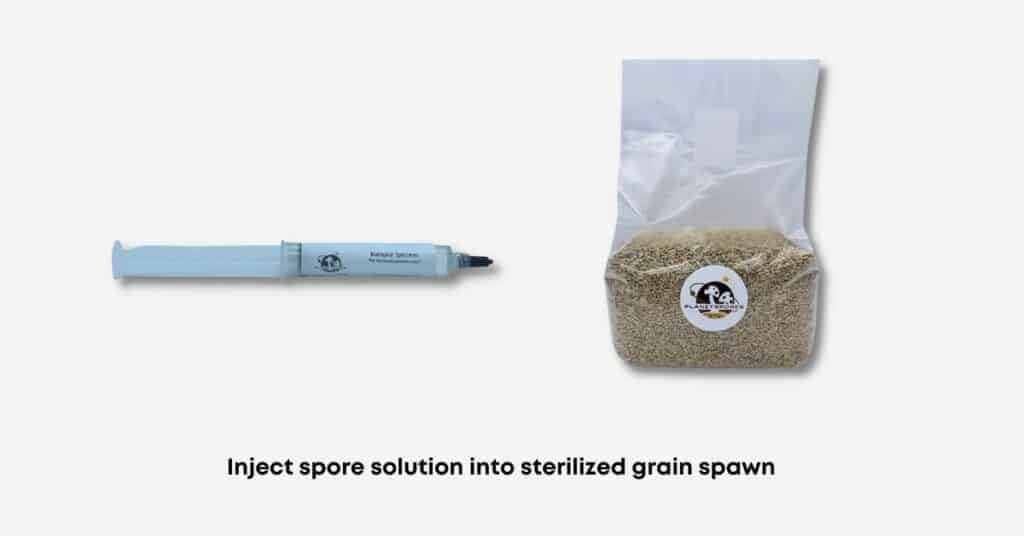
To inoculate your spawn with mycelium you either need spores, or another substance that already has mycelium growing in it, such as colonized spawn, agar, or liquid culture.
At Planet Spores we specialize in researching and producing active magic mushroom spores. In our genetics section, you can find a wide range of spore syringes ready for inoculation.
Before you begin inoculation, ensure you have cleaned everything thoroughly.
To inoculate mushroom spawn with a spore syringe, begin by allowing the syringe to reach room temperature. Shake the syringe well before injecting some or all of the spore solution into the spawn medium.
After spore injection, it’s important to seal off the injection area to prevent unwanted mold and other fungi species from competing with the mushrooms that you are trying to grow.
Read: How to Make Your Own Spore Syringes
Read: How to Make Mushroom Spore Prints
Now the waiting game begins, we must place the newly inoculated mushroom grain spawn in a warm dark place to allow the mycelium to fully colonize the spawn medium.
Colonization can take anywhere from 2 weeks to 2 months. Times vary greatly depending on the quality of the mycelium, environmental conditions, and how well you prepared the spawn medium in the previous steps.
Full colonization is achieved when you see most or all of the spawn medium covered by a thick network of white mycelium.
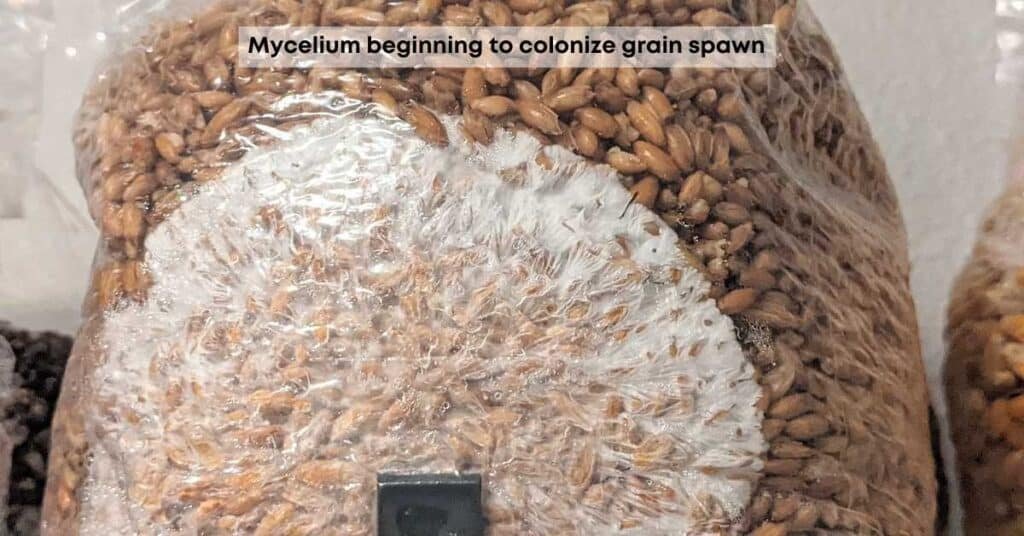
Supplies:
The next step to growing mushrooms is to choose and prepare mushroom substrate. Later down the line, you will mix this with your colonized spawn.
There are many substrates you can choose to use such as different types of wood, manure, compost, coco coir, coffee grounds, and soy hulls etc.
We suggest going with something that is easy to work with and does not easily contaminate with molds. Unlike mushroom grain spawn, substrate usually consists of several ingredients, mixed together to promote optimal fungal growth.
We sell a product called Shroom-Pro Optimized Mushroom Fruiting Substrate, this substrate is developed in-house by our team. It’s contamination resistant and it’s been enriched with supplements and PH balanced. Shroom-Pro is a great substrate for beginners and folks who don’t want to source all the ingredients themselves.
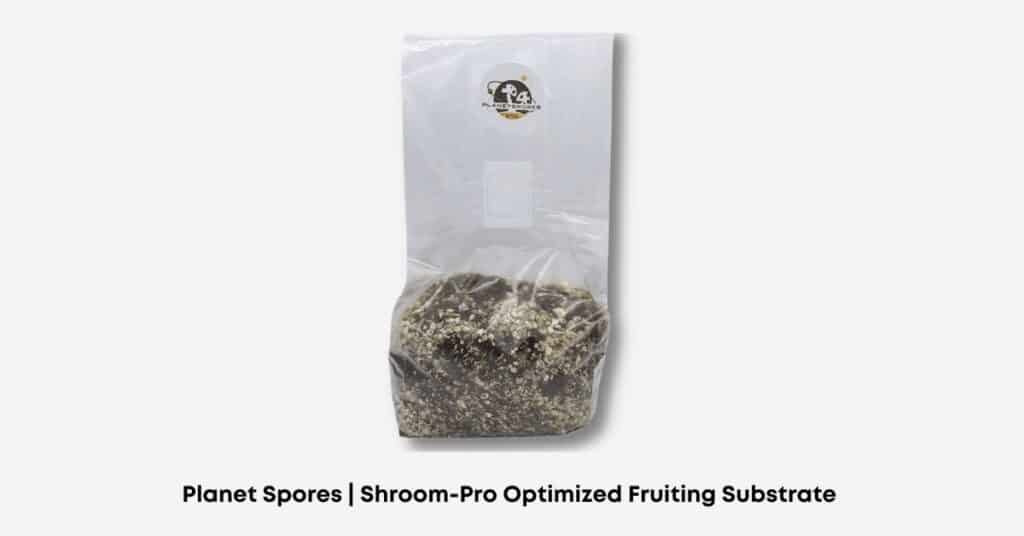
Similarly to the sterilization of mushroom spawn, mushroom substrate should also either be sterilized or pasteurized.
The ingredients of the substrate you choose will determine whether you need to fully sterilize it or just pasteurize it. Our in-house substrate only requires pasteurization.
Pasteurization requires less intense heat and pressure when compared to full sterilization. The idea behind pasteurization is to kill the harmful bacteria but keep the bacteria that is beneficial to fungal growth.
Pasteurization can be achieved with simple household items such as a bucket, lid, and boiling water. Whereas sterilization often requires expensive equipment such as a pressure cooker.
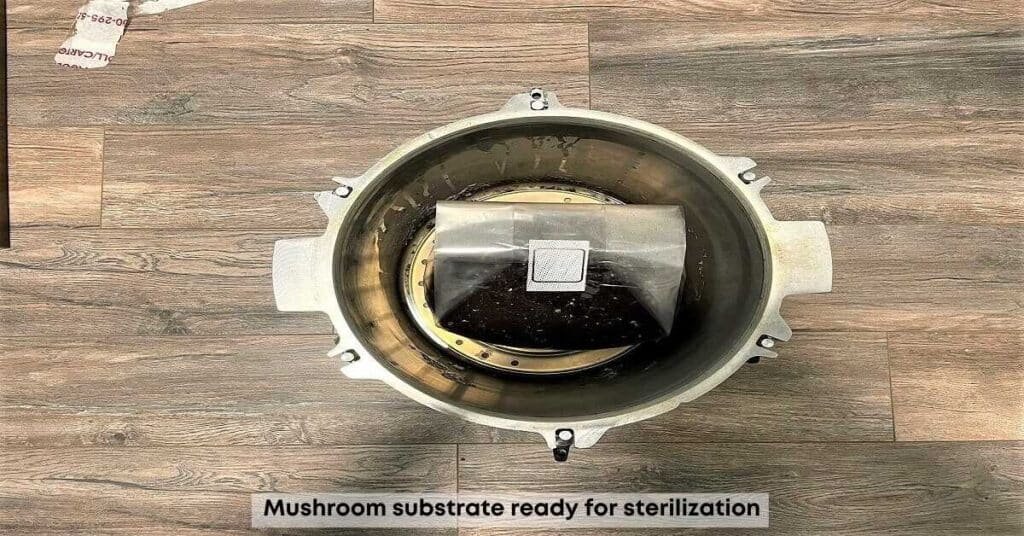
You must properly hydrate your substrate to promote optimal mushroom growth.
This process is often called reaching ‘field capacity’ and is generally described as the state achieved after squeezing a handful of substrate with only a couple of drops of water dripping out.
Supplies:
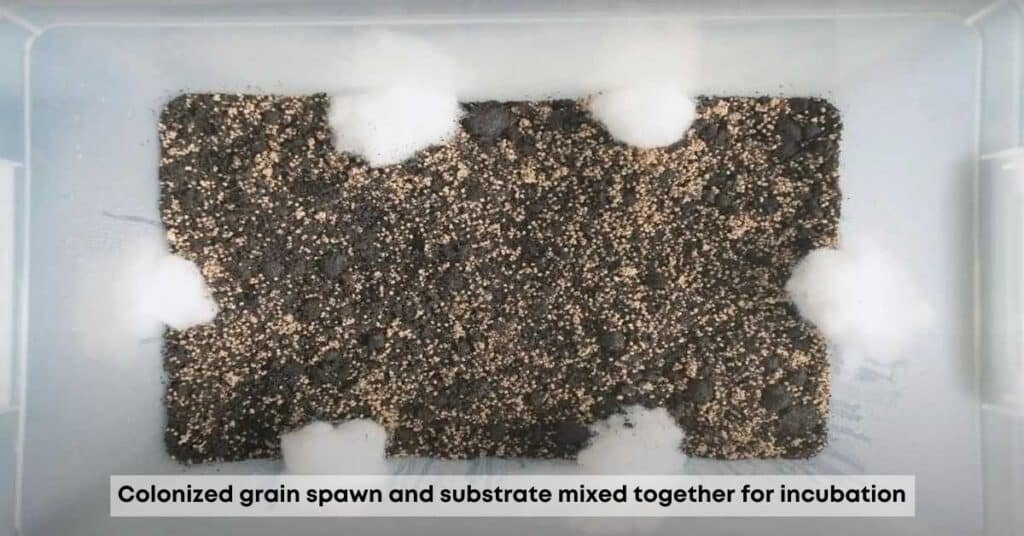
Once your substrate is hydrated correctly and has cooled from sterilization or pasteurization, it is ready to be mixed with your fully colonized grain spawn.
A quick reminder: clean everything, and ensure your workspace is as sterile as possible. Anytime sterilized material is exposed to the open air, there is a risk for contamination, to prevent this use a flow hood or still air box.
There are many methods on how to mix your spawn and substrate, whether or not to use a liner, to tamp the surface afterward or not to, or what spawn to substrate ratio to use, casing layers, etc. We will leave these extra options for you to decide on your own.
Mix your fully colonized grain spawn with the substrate you just made.
The mixing should be performed in your desired fruiting device. This could be a fruiting bag, a container, a tub, a mushroom fruiting chamber, fruiting dome.
Read: How to Make Your Own Monotub Mushroom Fruiting Chamber
Similar to Step 4 – Mushroom Grain Spawn Colonization, the newly mixed mushroom fruiting substrate should be tucked away in a warm dark place to allow the colonized grain spawn to incubate the substrate.
The incubation process can take anywhere from 1 week to 4 weeks. Times vary greatly depending on the quality of the mycelium, environmental conditions, and how well you prepared the spawn medium and substrate mediums in the previous steps.
Full incubation is achieved when you see most or all of the substrate fruiting mixture covered by a thick network of white mycelium.
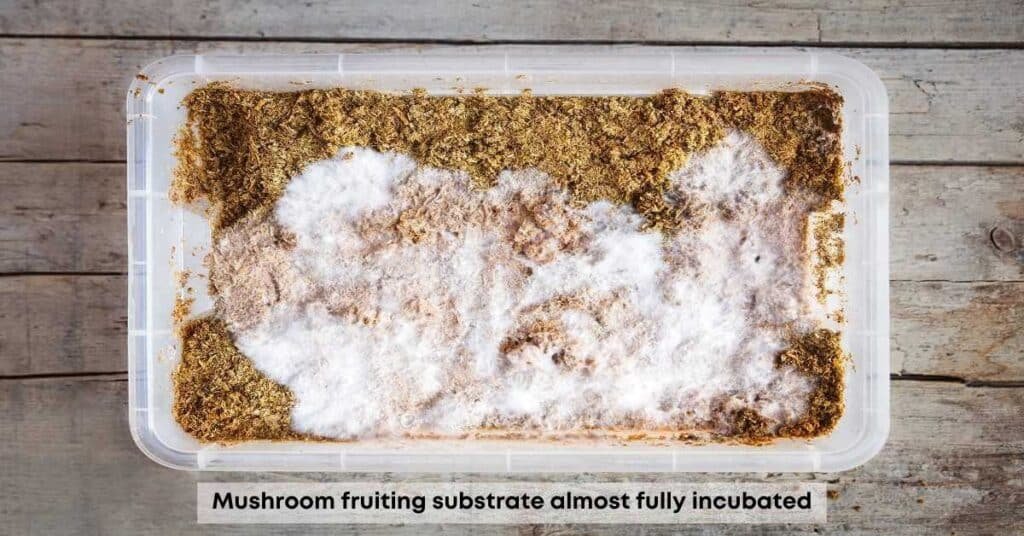
Supplies:
Once the mushroom fruiting substrate is covered in mycelium, it’s time to place it in fruiting conditions to trigger your mushrooms to begin fruiting.
In order to trigger mushroom fruiting you must change the environmental conditions. Expose the fruiting substrate to more fresh air, increase the humidity, and allow it to get some light.
This typically involves opening up some filtered air holes within your fruiting container, watering to increase humidity using a fine mist spray bottle, and increasing light exposure.
After a few days, you should start to see pinheads (baby mushrooms) beginning to form on your substrate. Another few days will pass and these pinheads will mature into fully grown mushroom fruits.
This is by far the most enjoyable part of mushroom growing. Watching the fruits of your labor burst out of the soil is so fulfilling.
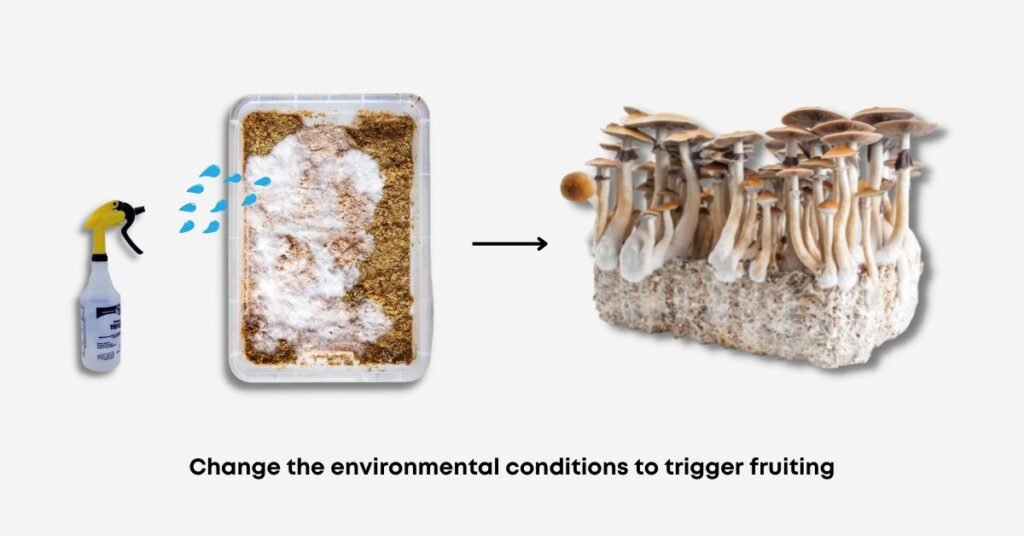

Supplies:
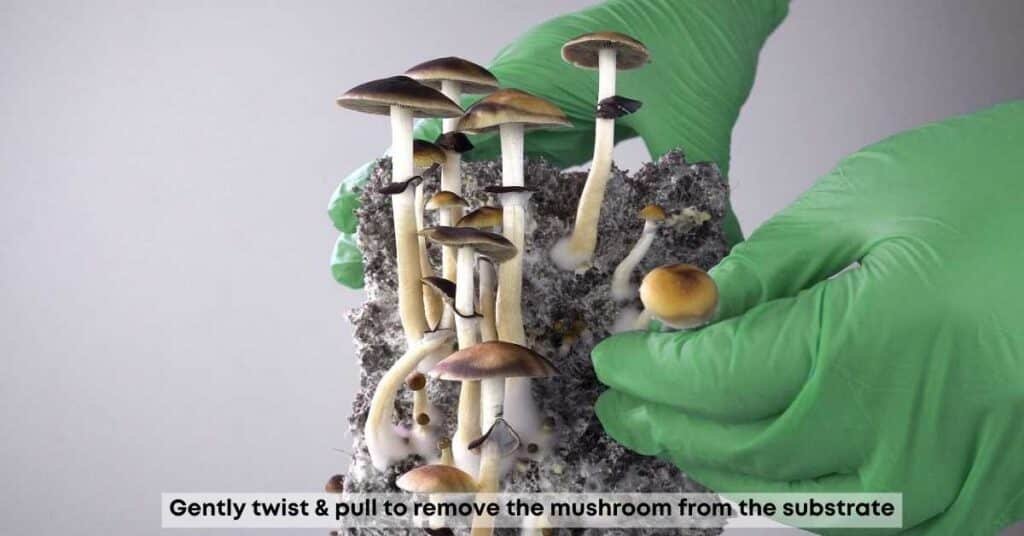
The best time to harvest your mushrooms is right before the veil separates from the gills releasing its spores. Try to avoid letting the mushrooms release their spores all over your substrate, this can have negative effects on future flushes.
Harvesting mushrooms is quite simple, normally all it takes is a gentle twist and pull from the base of the mushroom and they will break away from the substrate with ease.
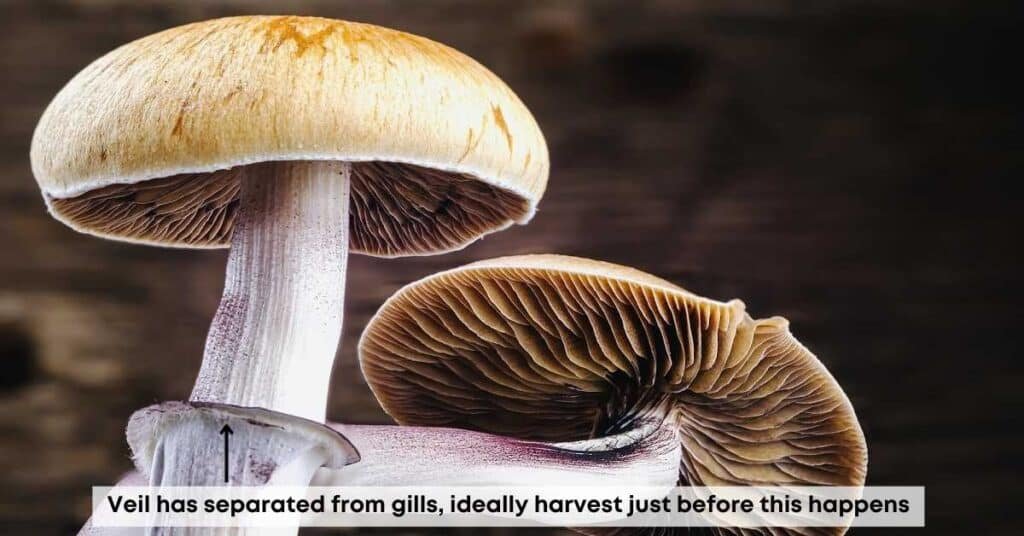
Shrooms can be harvested and will grow back multiple times if the growing practices are correct. Each new wave of mushrooms is called a flush.
To trigger more fruiting after a harvest, keep the substrate in fruiting conditions, and add more water. There are lots of different techniques when it comes to flushes, we will leave those up to you.
Once the mycelium has used up all of the nutrients, your substrate is then exhausted and will stop producing mushrooms.
Supplies:
Drying your mushrooms is fairly straightforward, if you don’t dry them they can rot and all of your hard work may go to waste.
To dry your mushrooms you can use a food dehydrator, self-made drying chamber, or a household oven. Avoid over-drying the mushrooms, you will know they are properly dried when they break apart easily with a snap, if they crumble you’ve over-dried them.
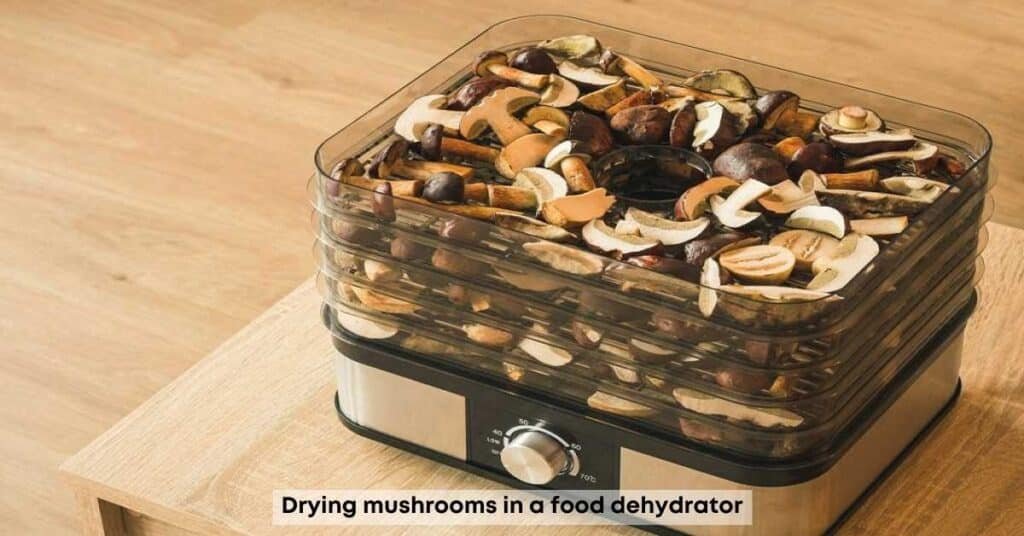
Read: How to Preserve Your Mushrooms by Drying Them
Read: How to Properly Store Mushrooms

Is this your first time growing mushrooms? A mushroom grow kit may help smooth the mushroom growing process out for you.
Our mushroom grow kits come with pre-sterilized grain spawn and include a variety of our in-house products such as substrate, lab supplies, and powerful magic mushroom spores. And of all you save money by purchasing these goods in a kit versus buying them individually.
Beginning with a kit is the best way to learn about growing mushrooms while skipping some of the more challenging parts of the mushroom-growing process.
Grow kits can be a foolproof way to ensure your mushrooms grow successfully.
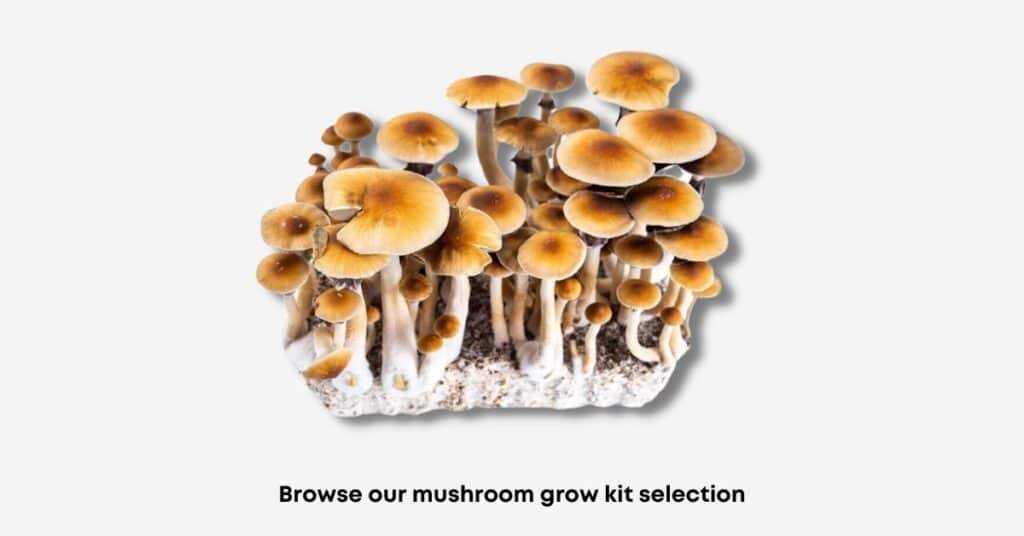
We specialize in producing high-quality magic mushroom spores for Canadians and the rest of the world. If you are new to mushroom growing, our spore inventory may leave you wondering which strains to pick?
Hopefully, this will help you decide!


What began as foraging for mushrooms deep in the woods as a child has graduated to growing mushrooms, eating, cloning, writing, and now spreading the love of mushrooms to the world.
Be the first to know when your favorite products go on sale, when new products are released, and when we publish new guides.


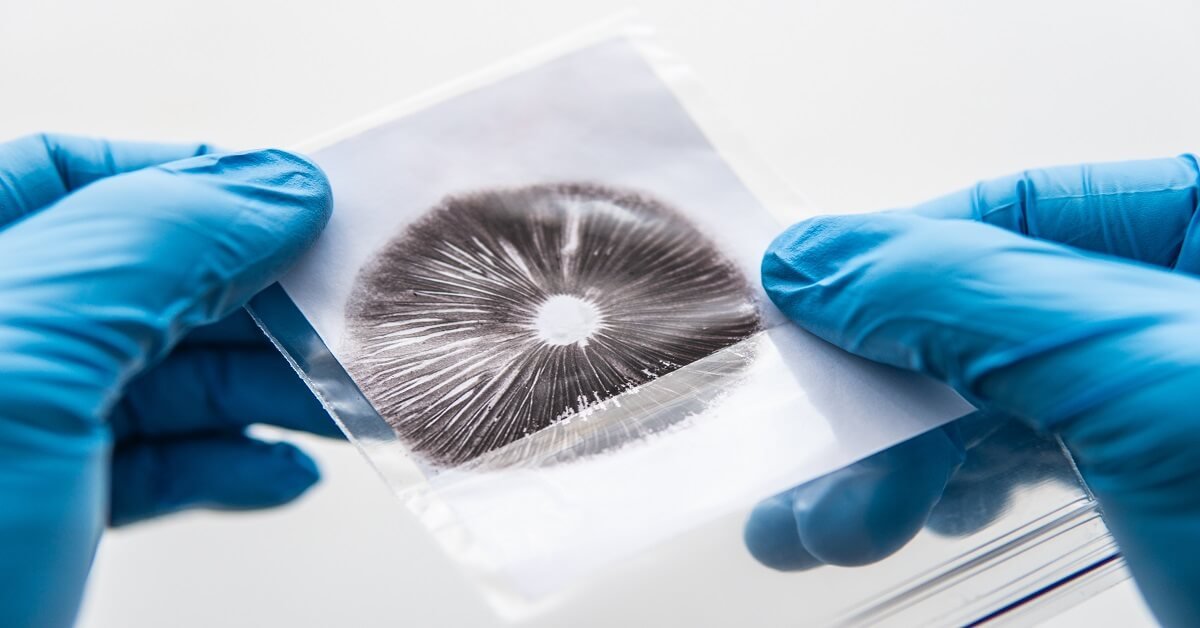


People buy magic mushroom grow kits for two reasons; price and convenience. What is meant by convenience? Well, throughout the mushroom growing cycle, there are

The term ‘microscopy’ refers to using a microscope to study objects that cannot be seen with the human eye. Mushrooms and their spores are just

Spore prints are essential to the mushroom growing process, their most important function is mushroom propagation, which is accomplished by introducing spores to a growing

If growing mushrooms is important to you, knowing how to make a spore syringe is an essential skill to learn. Growing mushrooms is a long,
Be the first to know when your favorite products go on sale, when new products go live, and when we publish new guides.